Exploring Finland’s Outer Islands
by Paul Richardson (VIMS technician)
If you’re ever in the Archipelago Sea of Finland, then you must visit the outer exotic islands. I took advantage of a few slow days before the experimental breakdown to take an overnight trip to Utö Island on one of the free boats that make regular rounds of these islands. Utö is an island on the outer archipelago with a town, a light house and an old military base that was used in battles with the Russians and others.
The boat I took, the M/S Eivor, is a refurbished Norwegian fishing vessel that is very sea worthy. It has a nice cafeteria, inside benches and seats and, my favorite part, the open air upper deck that is three stories above the water with diner style benches and tables.
The boat passed and stops at many islands along its five hour trip. It is nice to see all of the islands, but if you get off of the boat, you will be left until the next day. So, it’s good to bring an overnight bag for this trip and it’s also preferable to contact people ahead of time at whichever island you choose. I contacted Hanna Kovanen at Utö Island. She, like most everyone else that I met in Scandinavia, speaks fluent English. She’s very nice, and she’s a native of the island. When she was younger she went to California for a foreign exchange program. Hanna is a very bright multi-tasker in that she served as my tour guide, hotel clerk, and chamber of commerce minister once on the Island. The tour of the lighthouse was 6 Euros and my room was 25 Euros. As I said, the boat ride is free so this is a very inexpensive trip. Who said Scandinavia is too expensive to visit?
While on the boat I made some new friends, Antti and Tuula Karlin. Antti is an orninthologist and Tuula is a school teacher. They are native Finns. Antti was very surprised to meet an American and, like some others in Finland, he referred to me as “exotic”! Overall, my experience was that most Finnish people who speak English love to talk to Americans (like me!) and they’re all extremely kind. The Karlins were no exception and I genuinely enjoyed chatting visiting with them. We exchanged emails and we’ve been trading pictures and information ever since.
One interesting fact about Tuula is that she “collects” swimming holes. She goes swimming all over Scandinavia and other places, despite the temperature. She keeps a swimming journal with her collection of sites. When I saw her on the boat ride back on the next day she informed me that she went swimming at Utö. Meanwhile, I was wondering whether my sweater, long johns, hat, and jacket, were enough clothes for the frigid air temperature! Boy, I’m such a wimp when it comes to cold water!
Utö Island
I spent the night on Utö Island. It’s one of the outer most islands of the archipelago. It has a very rugged beauty and is steeped in a rich history. On the island there is an old military base, some weather stations, fishing shacks, plenty of beautiful vistas, a 19th century lighthouse and lots of history. The lighthouse that stands there now was built in 1814 – the original light house built in 1753 was blown up in the Finnish war. The island even has its own endemic toad. What they don’t have are ticks. Nice!
Connection to the United States
On Christmas Eve in 1947 a United States ship, the SS Park Victory, was just off of the Utö lighthouse trying to maintain its position in the icy waters when its boiler exploded and blew a hole through the side of the ship sinking it. Ten of the 148 men died and the other 138 were rescued by the people of Utö. They took them into their homes and gave them shelter and food. This was recognized by the U.S. government on at least two separate occasions and the letters are framed on the wall of the chapel in the lighthouse.
According to Hanna, this was the first time that the people of Utö ever saw a black person. According to personal accounts that Hannna referenced in her tour, there was some confusion among the black sailors when they entered the houses and found that there were no segregated tables where they could sit. This also created confusion for the citizens of Utö! Needless to say, all of the survivors were seated at the same tables. Hanna also indicated that she is related to one of these black survivors.
Off to Stockholm
The next day I got on the much larger (cruise ship size) M/S Isabella, which is a Viking Line “ferry” that carries some cars and mostly pedestrians from Turku to several ports at various locations within the 10 nations that border the Baltic Sea. My boat was headed to Stockholm, Sweden. It’s a pretty sweet deal, really. I paid 70 Euros for a round trip ticket. The ship picked me up at 8pm on Monday night in Turku. Once on board, I dropped my bag off in my cabin which was very nice with a private bathroom and fresh sheets. I then checked out the restaurants, casinos, discos, and the huge mall-like tax free shopping center, and then I went to bed. I’d walked all over Turku all day and so I was quite tired.
I awoke at 7am when the ship was approaching Stockholm. It amazed me how close the ferry went to the rocky shoreline. At several points, I could have easily tossed a baseball onto someone’s summer cottage. The ferry docked shortly thereafter and I had the whole day to explore Stockholm and I didn’t have to be back to the boat until 8pm. I walked all over the city. I inquired about the buses and trains and water taxis, but I chose to see a city on foot. Taking it slow allowed me to really see lots of cool details that I would have missed on the bus.
Stockholm is a very old, very beautiful capital city of 870,000, located on 14 islands in the south east of Sweden. The first thing that I noticed was the beauty. The second thing that I noticed was that there were literally more bikes than cars. There were so many of them flying down the hill as I walked into the old town, that I actually felt safer crossing the automobile road with its crossing lights than I did crossing the bike lanes! But I think it’s great! In the States, it’s the opposite. We have the tyranny of the automobile and good luck if you commute by bicycle.
I don’t have the data here to back it up but qualitatively, I’m sure that the Finnish and the Swedes are more physically fit than my fellow Virginian Americans thanks in part to the higher prevalence of bicycle usage. I didn’t drive a car for my entire 40 days in Scandinavia and instead rode a bike or walked, which is probably the reason that I lost 10 pounds during the trip. It was high school the last time I weighed so little!
The city was lovely and the main activity that I did while there, aside from eating and walking, was my visit to the Vasa museum. The Vasa is a one of a kind attraction. In 1628, the king of Sweden, Gustavus Adolphus, in his haste, launched the state of the art warship, Vasa to send to Poland to fight in some Catholic Protestant battles. At 226 ft long and 172 ft tall with 36 guns (twice the recommended amount) and fatefully, not enough ballast, the top heavy vessel floundered and sank near her railway on her maiden voyage. In the absence of ship worms and the presence of anoxic conditions resulting from the pollution in the harbor, the ship was nearly perfectly preserved.
In 1961 archeologists knew that the Vasa laid somewhere in the harbor and so they started taking cores of the sediment to see if they could get a plug of some white oak which is the wood that the Vasa was made of. After many attempts, they finally located and excavated her. Using SCUBA and some type of fire hose pump they insert several harnesses under the hull and ultimately hoisted the behemoth, nearly intact, to the surface. They’ve been restoring her ever sense.
The thoroughness of the museum was simply mind boggling. I spent three hours there and I could only scratch the surface. It is six stories from the keel to the top deck. They had to replace all of the water in the wood with polyethylene glycol. There were skeletons of the people who were on board and perished in the disaster. There were models, and maps and MRIs of the hull. In some ways it almost resembled a modern ship yard with lifts and heavy equipment and restorers flitting around working. There were so many exhibits with artifacts that it was overwhelming. By 1pm I was quite hungry and I needed to see sunlight again. I had intended to get some food and return, but when I went outside it was so beautiful that I vowed not to go into any more museums! I spent the rest of my day in Stockholm sightseeing and taking tons of pictures. Towards the latter part of the day, close to the time when I would catch the ferry, I went from pub to pub trying various delicious food and beverages.
As I got on the ferry in Stockholm on Tuesday night I received a phone call from Christoffer. He wanted to warn me that I must come directly to the lab and prepare for the field on Wednesday as soon as I got back from Turku. We would go to the field that afternoon and begin the ZEN breakdown since there was very bad weather predicted for Friday. My mini-vacation was over and it was time to get back to work on this last phase of my involvement with the ZEN project in Finland.



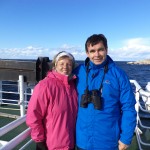
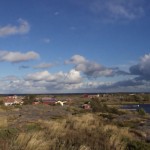
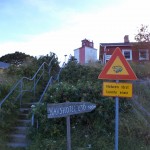
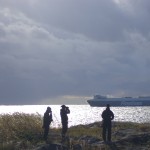
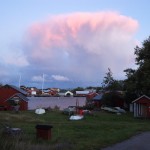
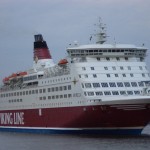
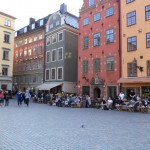
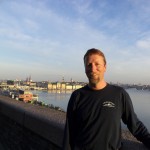
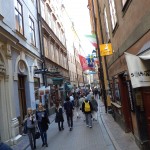
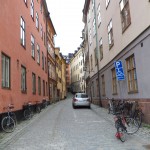
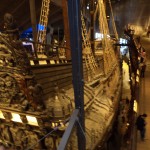
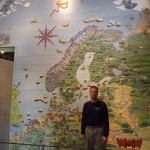

Comments are closed.